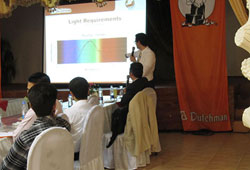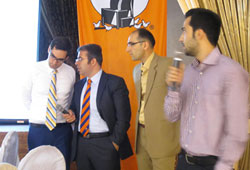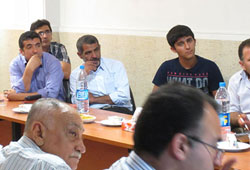



Understanding the Limits of Poultry Production
IRAN - Iran is a major poultry meat and egg producer. With no substitute for protein intake the market is large, but also segregated from most of the world community.




Therefore, with more than 50 years of experience in Iran and being the worldwide largest poultry equipment supplier Big Dutchman expertise is much sought after.
For this reason, Big Dutchman sales manager André Mofid together with Ali Jahedi, the company’s sales representative in Iran, decided to organize conferences throughout Iran. The aim was to provide detailed information on cost-effective poultry production. Since 2010 far more than 1,000 farmers have attended the conferences in total. In the middle of May two more conferences were held in the North-East of Iran.
Improving skills and best practices for poultry production
First, the German expert touched on the topic of comparing Germany to Iran and why so much technology was used in Germany as compared to Iran. He explained that German poultry farmers had to run their operations in a much more competitive environment. Therefore, the use of high tech was absolutely mandatory if they wanted to do their work profitably. As to markets with less competition the reverse conclusion was that, according to the sales manager, more time could be saved and even much more money earned if the same amount of technology was applied.
Second, Mr Mofid referred to best practices for efficient broiler growing from hatcheries to the slaughterhouse. In this context, he also provided ample information on suitable equipment, based on the comprehensive expertise the German world market leader had been accumulating through the decades.
"By understanding what advantages new systems have, farmers can greatly increase profits," André Mofid explained, "and this has been our strength on the Iranian market”. The farm managers and veterinarians present were highly interested in detailed information pertaining to this issue. Several of the topics, such as lighting, climate and housing were of major interested to the attendees.
"I am currently working on my doctorate discussing the relationship of lighting and bronchitis. With this new information I will have to look at my research again and revise some sections," one of the veterinarians present declared.
Knowledge spreads quickly
Mr Mofid invited one of the local farmers to one of the presentations in order to give his views on his Big Dutchman system he bought five years ago. The people present were in disbelief when he said that he had only required two new sensors in five years. He further stated that he had needed only 10 per cent of the oil that a typical farm needs, but in return also had had better feed conversion ratios.
"What is interesting to me," Mr Mofid said, "is that when we give this new information, no one believes it until we provide proof, which of course we do. On the next day everyone knows about it and we have to visit numerous farms."
Information on successful poultry production
The interest in new information from Big Dutchman has not decreased in the past two years since the first conference had been held, but increased steadily instead. One reason is that the government is phasing out subsidies for companies and farms, and thus working productive has become more important.
In addition to the proven and tested climate solutions, the housing equipment supplier has furthermore developed ventilation systems which ensure an optimal house climate especially in regions with very warm weather, even in conjunction with high humidity. The results are optimum stocking densities while providing excellent feed and water intake, lower building and energy costs as well as optimum air exchange throughout the entire barn.









